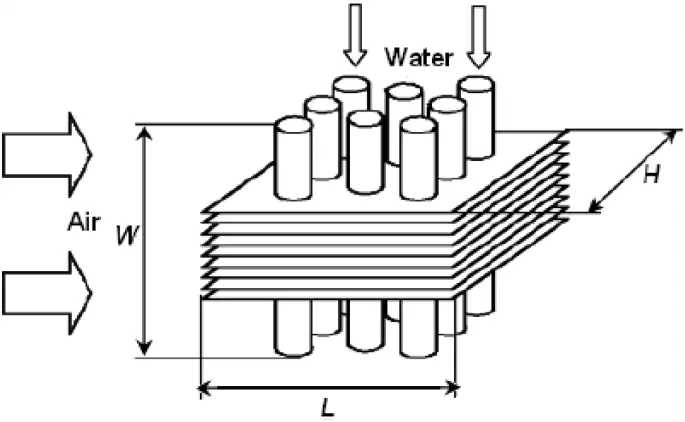Efficiency and Maintenance of Finned Tube Heat Exchangers
On this page
Finned tube heat exchangers, as an indispensable part of thermal engineering in industrial production and energy sectors, play a crucial role with their efficient heat exchange capability and wide application range. However, understanding their advantages and proper maintenance methods is essential to ensure their long-term stable operation. This article will delve into the advantages and maintenance methods of finned tube heat exchangers.

Major Advantages of Finned Tube Heat Exchangers
The advantages of finned tube heat exchangers are mainly manifested in the following aspects:
- High Heat Transfer Efficiency: Finned tube heat exchangers adopt a unique fin design, which disturbs the boundary layer of the fluid, breaking the convective heat transfer limitations of traditional heat exchangers and achieving higher heat transfer efficiency.
- Compact Structure: The special structural design allows finned tube heat exchangers to achieve a larger heat exchange surface area in a limited space. The specific surface area can reach an astonishing 1000㎡/m³, completing more heat exchange work in a smaller volume.
- Lightweight and Convenient: Manufactured with lightweight materials such as aluminum alloys, steel, copper, or composite materials, finned tube heat exchangers have excellent lightweight characteristics, making them easy to install and transport, while also reducing the burden of equipment weight.
- Strong Adaptability: Not only suitable for gas-to-gas, gas-to-liquid, and liquid-to-liquid heat exchange, but also applicable for phase change heat exchange. Through different flow channel arrangements and combinations, it can adapt to various heat exchange conditions and meet the needs of various industrial production scenarios.
Maintenance Methods
Maintenance and upkeep are key to ensuring the long-term stable operation of finned tube heat exchangers. Here are several important maintenance methods:
1. Avoid Chemical Corrosion: Keep finned tube heat exchangers away from acidic, alkaline, or other corrosive chemicals to prevent corrosion damage.
2. Select Appropriate Cooling Fluid: Choose softened water or standard coolant to prevent scale and dirt accumulation, which could affect heat exchange efficiency.
3. Pay Attention to Assembly Details: During assembly, pay special attention to protecting the finned tube heat exchanger and fins to avoid damage that may reduce heat dissipation capacity.
4. Regular Cleaning and Drainage: Periodically inspect the interior of the heat exchanger, ensure complete drainage to prevent the formation of water bubbles, and maintain proper water levels.
5. Prevent Winter Freezing: In winter, when not in use for an extended period, thoroughly clean the internal water to prevent freezing cracks that may affect service life.
6. Scheduled Maintenance: Conduct comprehensive cleaning on schedule, remove internal dirt, and ensure the normal operation of the finned tube heat exchanger.
2. Select Appropriate Cooling Fluid: Choose softened water or standard coolant to prevent scale and dirt accumulation, which could affect heat exchange efficiency.
3. Pay Attention to Assembly Details: During assembly, pay special attention to protecting the finned tube heat exchanger and fins to avoid damage that may reduce heat dissipation capacity.
4. Regular Cleaning and Drainage: Periodically inspect the interior of the heat exchanger, ensure complete drainage to prevent the formation of water bubbles, and maintain proper water levels.
5. Prevent Winter Freezing: In winter, when not in use for an extended period, thoroughly clean the internal water to prevent freezing cracks that may affect service life.
6. Scheduled Maintenance: Conduct comprehensive cleaning on schedule, remove internal dirt, and ensure the normal operation of the finned tube heat exchanger.
Mastering the advantages and upkeep of finned tube heat exchangers is pivotal for their optimal functionality and durability. By adhering to these guidelines, we ensure these devices remain dependable assets in industrial thermal management. Through diligent care, finned tube heat exchangers continue to facilitate efficient heat exchange, bolstering operational continuity and productivity across diverse industrial sectors.

